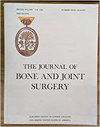Online learning resources: a creator’s perspective
1区 医学
Q1 Medicine
引用次数: 1
Abstract
For the last two decades, computers and the internet have been central to education. They are essential tools which allow educators to be creative and collaborative with their teaching, and to enable students an instant and ‘always-on’ access to content (Fig. 1). As a learning tool they are indispensable and at times frustrating, but increasingly they will provide the greater proportion of students’ total quantum of learning. With changes in the way information is accessed and courses are delivered, as well as the omnipresent nature of the internet, education bodies need to be cognisant of newer ways to deliver information, and the ways in which contemporary technologies may be used to address some of the difficulties the modern surgical trainee faces in gaining knowledge and proficiency. Fig. 1 Access to online resources has changed dramatically over the last 20 years. While the benefits of digital education are clear, there are a number of prominent potential issues: 1. Inconsistent content with a lack of peer review. 2. Excess volume of content, making it hard to distinguish which will provide the ‘best’ resources. 3. Content which is made inaccessible due to cost. 4. Content which is made inaccessible by institutional firewalls or by platform incompatibility. 5. Confusion and consternation over the risk of infringing copyright. These issues are in varying stages of resolution, but each provides a potential bar to the delivery of consistent, quality education. However, the trend in each is very much towards improvement. The modern internet is based on the early protocols devised by Tim Berners-Lee in 1989 to communicate between academic institutions. From the mid-1990s onwards, personal access to the internet has increased exponentially to become an almost universal tool for learning. Access to the internet for students has been essential for more than two decades, and its uses have increased in parallel with its …在线学习资源:创造者的视角
在过去的二十年里,计算机和互联网一直是教育的核心。它们是教育工作者在教学中发挥创造性和协作性的基本工具,并使学生能够即时和“永远在线”地访问内容(图1)。作为一种学习工具,它们是不可或缺的,有时会令人沮丧,但它们将越来越多地为学生的学习总量提供更大的比例。随着获取信息和提供课程的方式的变化,以及互联网的无所不在,教育机构需要认识到传递信息的新方法,以及如何利用现代技术来解决现代外科培训生在获取知识和熟练程度方面面临的一些困难。在过去的20年里,获取在线资源的方式发生了巨大的变化。虽然数字教育的好处是显而易见的,但也存在一些突出的潜在问题:内容不一致,缺乏同行评议。2 .内容过多,难以区分哪些是“最佳”资源。由于成本原因而无法访问的内容。由于机构防火墙或平台不兼容而无法访问的内容。对侵犯版权的风险感到困惑和恐慌。这些问题正处于不同的解决阶段,但每一个问题都可能成为提供始终如一的高质量教育的障碍。然而,两者的趋势都是朝着改善的方向发展的。现代互联网基于蒂姆·伯纳斯-李在1989年设计的早期协议,用于学术机构之间的通信。从20世纪90年代中期开始,个人对互联网的访问呈指数级增长,几乎成为一种普遍的学习工具。二十多年来,学生接入互联网一直是必不可少的,互联网的使用与它的发展同步增长。
本文章由计算机程序翻译,如有差异,请以英文原文为准。
求助全文
约1分钟内获得全文
求助全文

 求助内容:
求助内容: 应助结果提醒方式:
应助结果提醒方式:


